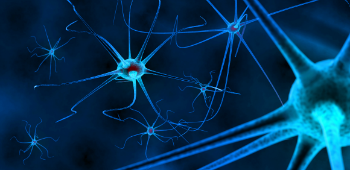
Stroke
A stroke is a neurological condition caused by a sudden disruption in the blood supply in a part of the brain
What is a stroke?
Every 5 seconds someone in the world will die of a stroke (World Stroke Campaign 2016). In England and Wales, a total of 1 million stroke survivors need post-acute care (Intercollegiate Stroke Working Party 2015). Although the incidence of stroke increases with age, 1 in 4 people that have a stroke are younger than 65 years old.
Signs and symptoms of a stroke include:
- Facial weakness, limb weakness, loss of fine finger movement
- Altered sensation: numbness, tingling, hemisensory loss
- Disturbance of level of consciousness
- Acute memory impairment
- Altered higher cerebral function: orientation, personality
- Speech and language disorders
- Visuospacial dysfunction: neglect
- Diplopia, loss of vision, homonymous haemianopias/quadrantanopias
- Disturbance of hearing
- Loss of balance, vertigo
- Ataxia
- Nausea, vomiting
- Severe headache
These symptoms occur suddenly and more than one can be present. A Transient Ischaemic attack (TIA) occurs when stroke symptoms resolve within 24 hours.
Ischaemic and haemorrhagic strokes are the two types of stroke but the management and treatment of them differs.
Stroke awareness
The FAST (face, arm, speech, time) campaign aims to promote quick recognition and treatment of stroke symptoms and the need to seek urgent help by calling 999. Learn more about the campaign through this video.
Ischaemic stroke
A total of 85 per cent of all strokes are ischaemic. An Ischaemic stroke occurs due to an interruption of blood supply to an artery of the brain, usually caused by a thrombus (clot) or embolus (arising from other parts of the body). In a TIA there is a temporary interruption of blood supply to an artery of the brain. Ischaemic strokes can occur because of:
- Atherosclerosis
- Cardioembolism
- Lacunar stroke
- Cryptogenic stroke (a stroke of undetermined cause)
- Other causes such as haematological disorders, arterial dissections and venous thrombosis
Thrombolysis and thrombectomy are emergency treatments for ischaemic stroke. Thrombolysis (clot busting) is a lifesaving treatment that can be given to patients with stroke within 4.5 hours of symptom onset. Alteplase (a recombinant tissue plasminogen activator) is used as the thrombolytic agent. Thrombectomy is the guided mechanical removal of a thrombus (blood clot) through the femoral artery.
Haemorrhagic stroke
A total of 15 per cent of all strokes are haemorrhagic. Haemorrhagic strokes are caused by a burst artery in the brain. They can be divided in primary intracerebral haemorrhages (occur in the brain) and subarachnoid haemorrhages (occur in the space between the arachnoid and pia layers where blood vessels are present).
The majority of primary intracerebral haemorrhages occur because of hypertension. Other causes include arteriovenous malformations or aneurysms, intracerebral tumours, haematological disorders, alcohol, illicit drug use, and haemorrhagic transformation of ischaemic strokes.
Risk factors
The following are risk factors for stroke:
- Age
- Gender
- Ethnicity
- Previous stroke or TIA
- Family history of stroke
- Migraine
- Excessive alcohol consumption
- Hypertension
- Hypercholesterolaemia
- Illicit drug use
- Diabetes
- Physical inactivity
- Obesity
- Smoking
- Atrial fibrillation or other cardiac pathologies
- Obstructive sleep apnoea
- Poor diet
- Hypercoagulable states
- Haemotological disorders
- Patent foramen ovale
The role of the nurse in stroke care
All nursing staff have important roles and responsibilities when caring for people with a stroke. These include:
- Physiological monitoring and maintenance of homeostasis
- Reduce morbidity and prevent mortality
- Prevent and detect lesion extension and cerebral oedema
- Prevent complications
- Understand stroke aetiology
- Assess potential/ Facilitate recovery
- Multi-disciplinary assessment and input
- Prevent recurrent stroke
Stroke conferences

UK Career Framework for Stroke Nurses
This resource outlines the range of career pathways within stroke nursing and minimum recommended education requirements, in addition to knowledge and skills.
It provides a guide for stroke services and employers to develop local career development frameworks for the nursing workforce.
Neuroscience nursing forums
Stroke prevention
Download this chart to find out about more about stroke prevention.
Stroke guidance
Stroke care audits
Page last updated - 08/10/2025





